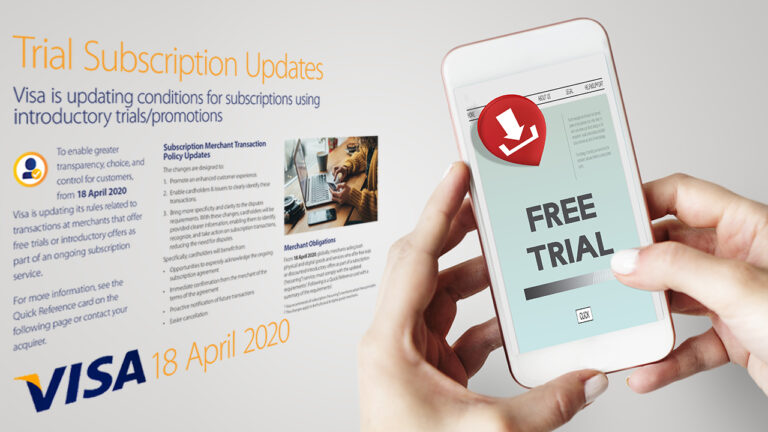Chargeback Accounting for Merchants: What You Need to Know

Many merchants have a fraught relationship with credit cards. On the one hand, credit and debit cards can drive business, making it easier for customers to shop both online and in the real world. Merchants also don’t have to make change or handle as much cash, and the entire checkout process often goes more quickly and smoothly. On the other hand, cards come with processing fees, can fuel fraudulent transactions, and may result in chargebacks. The latter two issues are especially grave for merchants. We’ve already covered how to prevent and combat chargebacks extensively on our website, and today we’re going to take a look at chargeback accounting.
A Brief Review of Chargebacks and What Chargeback Accounting is Crucial
Chargebacks are meant to protect customers from fraud. A chargeback reverses a payment and the money is returned to the cardholder. From the point of view of the cardholder, the chargeback is essentially a refund. From the POV of the merchant, it’s an unauthorized refund and funds are lost. If the merchant successfully disputes the chargeback, however, the revenue will be returned.
It’s crucial to correctly track chargebacks for accounting purposes, as they can have an impact on revenue, business costs, and taxes, among other things. If you don’t track chargebacks, and revenue from a sale that was later clawed back isn’t accounted for properly, it could lead to various issues. For example, you might end up paying more in taxes than you should have.
Modern accounting software makes it easier to properly track your finances. Much of the work can now be automated. Yet it’s crucial for businesses to make sure that they are tracking everything properly, especially when it comes to chargebacks.
The Chargeback Representment Process and Accounting
Further accounting complications arise because the chargeback representment process takes a long time to get resolved. The representment process comes into play when a merchant disputes a chargeback. Essentially, both the merchant and the cardholder will have a chance to “represent” the transaction to the card-issuing bank, which will then make a ruling on whether to approve the chargeback.
The problem, accounting-wise, is that the whole process can take up to 120 days to complete. This means merchants won’t know if they get to keep the revenue from the sale until the end of the representment process. It’s crucial to keep timelines in mind when documenting chargebacks in your accounting.
Properly Documenting Chargebacks
Now that you’ve got the basics of chargebacks and accounting down, it’s vital to understand how you should document chargebacks for accounting purposes. Keep in mind that if this all sounds complicated, you can bring in an accounting firm to help. If you want to prevent chargebacks, allowing you to avoid many hassles, you can also work with the team at ChargebackHelp. We provide a variety of tools that make it easier for merchants to combat and prevent chargebacks.
To properly document chargebacks, follow the basic process below:
Clearly identify the transaction- Upon receiving a chargeback, you need to identify it in your own records. Make sure you take note of the transaction date, as well as the disputed amount (in some cases, you may be hit with a partial chargeback).
Note any fees- Unfortunately, once a chargeback is filed, you’ll get hit with chargeback fees. This is true even if you win the dispute. Fees can vary, so make sure you spell them out and track them. You may also get hit with processing fees and other costs.
Update your revenues- Next, you’ll want to deduce the chargeback amount and fees from your revenues. This will help you keep your records in proper alignment and may also reduce the risk of cash flow issues.
Make inventory adjustments- There’s a good chance that inventory is at stake. If you sold someone a $300 watch and they filed a chargeback, you’re most likely not getting the watch back. You may be able to write off the lost inventory but make sure you always check with local tax authorities.
Ultimately, you need to keep detailed records of chargebacks and other disputes. This can help come tax season and also with business and financial planning. It’s wise to regularly review your records as well. You might uncover crucial insights that could later allow you to reduce chargebacks.
Chargeback Reversals and The Impact on Accounting
When merchants successfully win a chargeback dispute, the revenue from the transaction will be returned to them. This is called a chargeback reversal. It’s crucial to update your revenue and financial statements to reflect the restored revenue. Some processing fees may also be returned. If so, you’ll need to update your expenses. If products were returned during the dispute, you’ll need to update your inventory as well.
Take the Fight to Chargebacks
Chargebacks can have a major impact on a business, with the impact going well beyond financial records and accounting. Unfortunately, chargebacks can cause cash flow issues, will increase expenses, and can erode a company’s financial standing and competitiveness. When possible, it’s best to prevent chargebacks. Failing that, merchants can fight chargebacks, and if they win the disputes, they will recover their revenues.
With business and financial planning, it's smart to forecast chargebacks based on previous trends. You’ll also want to consider the costs of managing and preventing chargebacks. Some businesses set up entire chargeback mitigation teams. Even if you don’t set up a team, you’ll want to keep labor costs and the like in mind.
Need help with chargebacks? Want to protect your bottom line? Get in touch with the team at ChargebackHelp.






